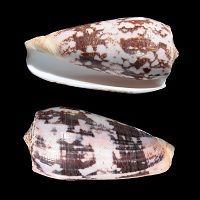Article
Turning Marine Snail Venom into Pain Medication
Author(s):
A University of Queensland (Australia) researcher appears to have overcome a substantial hurdle in harnessing the potential of marine snail venom as a means for pain medicine.

A University of Queensland (Australia) researcher appears to have overcome a substantial hurdle in harnessing the potential of marine snail venom as a means for pain medicine. According to Richard Clark, PhD, a researcher in the university’s School of Biomedical Sciences, snail venom has been a well-known and promising source of new pain drugs that has, unfortunately, remained untapped due to substantial hurdles that have restrained progress.
“Translating the venom’s toxins into a viable drug has proved difficult,” Clark said. “But now we’ve been able to identify a core component of one of these conotoxins (toxins from cone snail venom) during laboratory tests. We think this will make it much easier to translate the active ingredient into a useful drug.”
In the April 4, 2016 issue of Angewandte Chemie International Edition, Clark and colleagues write, “α-Conotoxins are disulfide-rich peptides that target nicotinic acetylcholine receptors. Recently we identified several α-conotoxins that also modulate voltage-gated calcium channels by acting as G protein-coupled GABAB receptor (GABABR) agonists. These α-conotoxins are promising drug leads for the treatment of chronic pain.”
The active ingredient in sea snail venom is used to immobilize prey and protect the snail from predators, according to Clark. “The venom’s analgesic properties have been well researched,” he said.
“In this study, we’ve been able to shrink a particular conotoxin to its minimum necessary components for the pain relief properties to continue to work. Using a laboratory rat model, we used the modified conotoxin to successfully treat pain generated in the colon, similar to that experienced by humans with irritable bowel syndrome. Although the conotoxin has been modified, its pain relief properties remained as effective as the full-size model. Simplifying the conotoxin will make a drug much faster and cheaper to develop.”
In conclusion, Clark and colleagues wrote, “Structure determination by NMR spectroscopy helped us identify a simplified biologically active eight residue peptide motif containing a single disulfide bond that is an excellent lead molecule for developing a new generation of analgesic peptide drugs.”
Additional research has begun, according to Clark, in order to improve the modified conotoxin’s stability and to test its ability to treat other pain types.
Clark completed the study along with the help of David Craik, an ARC Laureate Fellow in the university’s Institute for Molecular Bioscience; David Adams, a professor at the Royal Melbourne Institute of Technology; and Stuart Brierley, an associate professor at the University of Adelaide.



